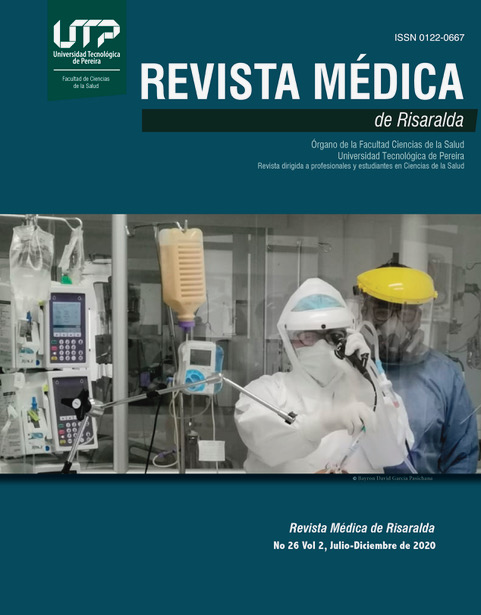Preterm birth from live-born registry in the period between 2008 – 2017 in Colombia
DOI:
https://doi.org/10.22517/25395203.22091Keywords:
Ecological Studies, Premature delivery, Phi correlation coefficient, premature newbornAbstract
Background: Preterm birth is one of the main problems in infant health and it is the leading cause of infant mortality in developing countries. During the last 20 years this particularity has been increasing in the world for different reasons. Knowing its trend and population characteristics is a useful element for its attention.
Objectives: To describe the population characteristics associated with preterm birth in Colombia from the data of the Live Birth Registry in the decade 2008 - 2017.
Methods: Descriptive ecological study using secondary sources such us Vital Statistics microdata from DANE; information stored in the Microsoft Office® Excel program. Also, the analysis of the time/place/person variables in the SPSS ™ statistical program through descriptive statistics, and association analysis using the Chi-square statistic and the Phi correlation coefficient for the statistical association between variables was implemented.
Results: 6,705,385 records from live-born registry were analyzed. 1,277,839 corresponded to preterm birth up to 37 weeks of gestation with 19% of prevalence all years. The departments with the highest rate of premature infants were Atlántico, Bogotá, Antioquia, and Santander. No strong association was found with live birth registry data.
Conclusions: There is lack of complete and accessible information to researchers related to preterm birth. The data is not homogeneous and does not follow specific parameters. However, the live-born registry is an excellent instrument for collecting population data and a useful basis for approaching this event.
Downloads
Downloads
-
Vistas(Views): 1083
- PDF (Español (España)) Descargas(Downloads): 615
Published
How to Cite
Issue
Section
License
Cesión de derechos y tratamiento de datos
La aceptación de un artículo para su publicación en la Revista Médica de Risaralda implica la cesión de los derechos de impresión y reproducción, por cualquier forma y medio, del autor a favor de Facultad de Ciencias de la Salud de la Universidad Tecnológica de Pereira. 1995-2018. Todos los derechos reservados ®
por parte de los autores para obtener el permiso de reproducción de sus contribuciones. La reproducción total o parcial de los trabajos aparecidos en la Revista Médica de Risaralda, debe hacerse citando la procedencia, en caso contrario, se viola los derechos reservados.
Asimismo, se entiende que los conceptos y opiniones expresados en cada trabajo son de la exclusiva responsabilidad del autor, sin responsabilizarse ni solidarizarse, necesariamente, ni la redacción, ni la editorial.
Es responsabilidad de los autores poder proporcionar a los lectores interesados copias de los datos en bruto, manuales de procedimiento, puntuaciones y, en general, material experimental relevante.
Asimismo, la Dirección de la revista garantiza el adecuado tratamiento de los datos de carácter personal



